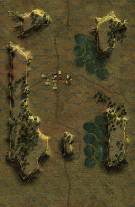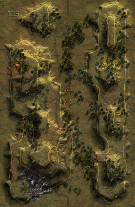| Author |
JayTownsend
|
| Method |
Solo |
| Victor |
Draw |
| Play Date |
2017-08-31 |
| Language |
English |
| Scenario |
KWCA034
|
Korean War: Counter-Attack, scenario #34: Action on Sibidang-san
In this scenario the Americans have a better morale of 8/6 compared with the pervious scenario so they have a better chance of holding off the North Korean tide. It is night and both sides have a nice mix of units including armor but the victory objectives are for eliminated enemy steps, control of village, town and 60 meter hill hexes. The Americans are a smaller force, so must pick what victory objective are defendable and more important in this nigh action.
I decided to defend only the town hexes and the 60 meter hill hexes on opposite maps so I have to split my American forces accordingly but I have minefield counters to help but still concede the village hexes at a low victory point cost. It was almost like two separate battles and fought in the night to boot. The NKPA got some great Initiative roll throughout the battle and attacked the town very well but not the Hills.
The North Koreans took the town and village hexes but could not take the 60 meter hill hexes. The final result was 28 points for the NKPA to 23 points for the Americans ending in a Draw by one point. I needed to move more forces to the Hills as the North Korean player, after I saw the town was falling but didn’t try until it was too late. This scenario has many options for both sides and I could see the results falling either way good scenario but it will take about 5 hours to play.
Here was my original design historical conclusion for this scenario:
Conclusion
The North Koreans moved up close to the American foxholes on the crest of Sibidang-san and anti-personnel mines stop the first assault which was followed in quick succession by others but they were all turned back by B Company and C Company in support. Toward Komam-ni on the road American Sherman tanks destroyed a T34 and a 3.5in Bazooka Team took out a self-propelled gun and several 45mm anti-tank guns. At daylight on the slope of Sibidang-san among the enemy dead was the commanding officer of the N.K. 13th Regiment.
Although Colonel Fisher’s 35th Infantry held all it original positions with the exception of G Company, they were in a dangerous situation with over 3000 North Korean soldiers behind their lines.
In the Changnyong-Yongsan area however the 2nd Division had been split in half with a deep North Korean penetration. The N.K. 9th Division had effected a major crossing of the Naktong River in two areas. General Walker weighed the news of the southern front as the most in need of his Pusan Perimeter reserves.
|


 KWCA033
KWCA033 






























